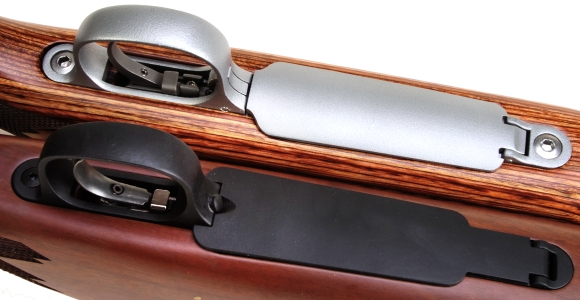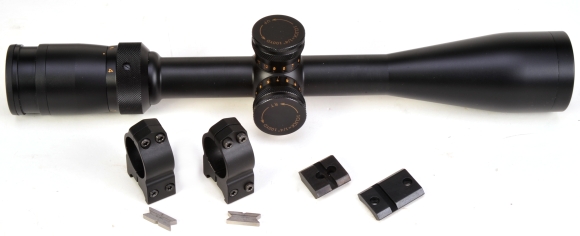
We have a giant iceberg, or ice floe, forming on the garage roof of our home that terminates in a huge gutter-clinging array of icicles. Big icicles…. ten to twelve feet long, hundreds of tons… each, and hanging right over the garage’s pedestrian door. No, I am not being an alarmist and, yes, there are at least two words in this paragraph I’ve not previously attempted to use when expressing a coherent thought.
My wife, my lovely partner in this crazy mixed up icicle laden journey we call life, insisted that leaving things as they were, and continuing to use the pedestrian door, was tantamount to committing suicide by icicle. Standing just outside the pedestrian door, under the subject formations, I asked for clarification. Was she, in fact, suggesting that I was trying to commit… ciclicide? She slammed the door, apparently to demonstrate her theory, and almost committed a homicicle. The winter, I believe, is beginning to get to me. 3″ of snow forecast today, to set the foundation for 12″ of snow forecasted for tomorrow.
The Remington Model Seven CDL
The walnut stocked and hardware blued Model Seven CDL is a good looking gun. No doubt about it. At 6 lbs 3 oz, and with a 20 inch barrel, it is light to carry and fast handling. The Model Seven CDL is also available with a quality, black synthetic stock, an attractive product in its own right with a major price advantage going to the synthetic, $681 MSRP compared to walnut stocked gun’s $998 price tag.
The Seven stock’s walnut coloring is brownish, not reddish. The matte poly, ebony colored forearm tip and grip cap compliment the rifle’s appearance. Laser cut checkering is moderately contrasting, well-placed, neat in appearance and functional. The non-Monte Carlo cheek piece is cut correctly for the height of the rifle’s comb and heel. Sling swivels are appreciated. Hardware is satin black… very nice. The barrel has a target crown, the floorplate is hinged to facilitate unloading. Trigger guard and floorplate material is blackened aluminum, the magazine box and follower are steel. The combination’s felt recoil is modest, as is muzzle blast, which I attribute to moderate bullet weight, moderate velocity, a straight cut stock and Remington’s spiffy Super Cell recoil pad.
How sincere are my observations? I took the rifle out of the box, disassembled and cleaned it, hung on a scope, fired a few rounds, then immediately purchased the rifle.
There is a short action, then there is a shorter action…
The Model Seven is not the same as a Model 700 short action rifle. In comparison to a Model 700 Mountain rifle the Model Seven weighs a half pound less; 6 lbs 11 oz vs. 6 lbs 3 oz.. While receiver ring and bolt body and lug size diameters remain the same, the Model Seven measures 5.25″ across its receiver rings. The Model 700 short action is 5.75″ over the same span. The Model Seven’s bolt travel is 4.50″, while the Model 700 bolt travel is 5.00″. Both guns provide the same strength and both feature Remington’s three rings of steel cartridge support. The Model Seven is just a shorter and, therefore, lighter action.
The look and feel of the Seven is very much like the current generation of Model 700 CDL firearms; light, slender in the forearm, understated in a way that is appealing in a rifle. Pull, drop, and overall geometry right down to the cheek piece are the same for both. The bottom metal is a little bit different. The Model 700’s securing hardware is much larger and the forward fastener is exposed rather than hidden under the hinged floor plate. The floorplate release on the Model 700 is inside the guard, the Model Seven’s release is located on the front of the guard.

Both the firearms pictures have adjustable triggers, however, the Model Seven has the current X-Mark Pro adjustable trigger, as do all current Model 700 and Seven models. The Mountain rifle, pictured top, was an earlier purchase and came with the X Mark Pro non-adjustable trigger, which was replaced with a Jewell HVR. All HVR adjustments are accessible without removing the barreled action from the stock. The Remington’s pull weight only is adjustable at the guard. Works for me as I would only adjust pull without removing and securing the action in a fixture.
Works better with sights…
With the exception of the 350 Remington Magnum version of the Model Seven, the gun is shipped with a clean barrel – no sights. There are few requirements for metallic sights these days when there are so many nearly indestructible optical sights of one type or another from which to choose. In this case, I went with a Weaver 2-10x42mm and Warnes’ steel bases and rings with cross locks.

Base thickness for the Model Seven is the same as the Model 700, 0.265″ rear, 0.165″ front, however the hole spacing is different so bases are not interchangeable. Model Seven bases fit earlier Remington Models 600, 660, 670, 673, and XP-100 models. The Brownells # is 947-000-180
Matte Base Set Mfr. Part: M902801M… about $20. The rings are Brownells # 947-005-122
1″ Maxima TPA Rings, Medium, Matte Finish Mfr. Part: 201M… about $30. The rings, of course, fit any Weaver type base on any firearm. They are a good steel rings with cross locks that locate them fore and aft in their bases.
Doing a 180 on the 260 – I am such a hypocrite…

For many years I poked holes in deer and similar size game with one .243 Winchester or another… the bullets, not the rifles, and I espoused the round’s virtues for use on everything from fleeing woods bunnies to charging elephants. Yet I dismissed the 260 Remington, at its introduction, as being low in velocity, rainbow-like in trajectory and too under powered to be useful for squirrel hunting. While ignoring the .243 Winchester’s lineage, I quickly associated the 260 Remington with its parent 308 Winchester, a round we all know is nothing more than a 30-06 Springfield Short, made solely for fancy lads from Europe. In my defense, I always include objective data and pictures when publishing projects so readers can draw their own conclusions, and ignore mine if I have wandered off track and into a ditch. It happens, a lot. And I get email.
So what is the real story, Joe…
Out from under the mesmerizing effects of shooting 150 grain case capacity magnums and an irrational preoccupation with 20 grain case capacity efficiency, the 260 Remington looms large as emphatically sensible, reasonable and more than adequate. In short, for a hunting rifle and not something to show off, the 260 Remington reflects… wisdom of selection… and the modest case capacity does lend itself to short barrel rifles. There, I’ve said it out loud, now leave me alone and stop sending crazy email.
 The 260 Remington is one in a series of 308 Winchester case derivatives which include the standardized cartridges: 243 Winchester, 260 Remington, 7mm-08 Remington, 338 Federal, and 358 Winchester. The SAAMI drawing for the 260 Remington has an issue date of 1/29/97. The round is popular as a competition cartridge for the AR crowd, due to its short length and high ballistic coefficient for bullets at the higher end of the 0.264″ bullet range. As I am not a fanatical fan of eleven pound autoloading rifles with more projecting points and angles that a Swiss Army knife, and because I am interested broad applications of the round, I’ll skip the gas guns and stay with the utility of a bolt action compact rifle.
The 260 Remington is one in a series of 308 Winchester case derivatives which include the standardized cartridges: 243 Winchester, 260 Remington, 7mm-08 Remington, 338 Federal, and 358 Winchester. The SAAMI drawing for the 260 Remington has an issue date of 1/29/97. The round is popular as a competition cartridge for the AR crowd, due to its short length and high ballistic coefficient for bullets at the higher end of the 0.264″ bullet range. As I am not a fanatical fan of eleven pound autoloading rifles with more projecting points and angles that a Swiss Army knife, and because I am interested broad applications of the round, I’ll skip the gas guns and stay with the utility of a bolt action compact rifle.
For the sake of context, I will say that there are a number of 0.264″ rounds in common use, some more than others, that span the range from the 6.5x50mm Japanese to the 264 Winchester Magnum. Case capacity runs from 45 to 82 grains. Three cartridges I currently handload are the 6.5x55mm Swedish Mauser, the 6.5 Creedmoor and the subject cartridge 260 Remington and as they appear, pictured right. The sequence follows handloading manual placement in order of ballistic performance.
I’m going to take a break here, go shovel some snow, chop some ice and get to work on Part II – Handloading, live fire and “Tomatoes; friend or foe”.
A Model Seven in 260 Remington Part I
A Model Seven in 260 Remington Part II

Email Notification